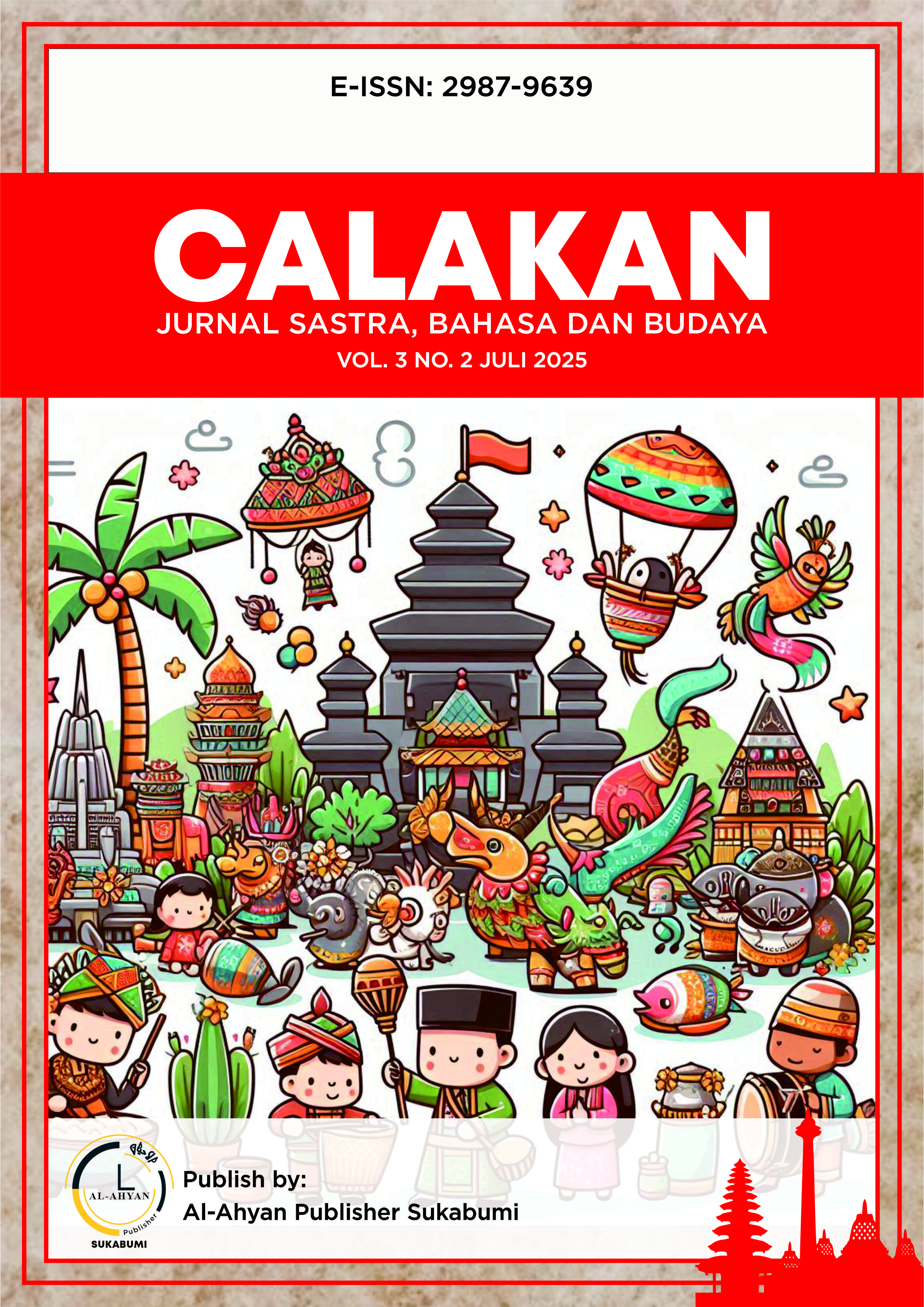M’S ID, Ego, and Superego in Film How to Make Millions Before Grandma Dies
DOI:
https://doi.org/10.61492/calakan.v3i2.383Keywords:
Freud id, ego, superego, filial piety, Thai cultureAbstract
This research explores the psychological conflict experienced by the main character, M, in the Thai film How to Make Millions Before Grandma Dies (2024). This study uses Sigmund Freud's psychoanalytic theory, specifically the concepts of id, ego, and superego, to analyze M's inner transformation. At the beginning of the story, M is driven by a personal desire to inherit from his grandmother. However, as time goes by, he experiences emotional changes that make him face an inner conflict between his ambition and his growing moral awareness, as well as an increasingly strong emotional bond. The cultural value of filial piety in Thai society plays an important role in this process, as it helps shape M's moral awareness and the development of his superego structure. Using qualitative descriptive methods, this study identifies how M's psychological conflict is reflected through his actions, expressions, and developing relationship with his grandmother. The results show that the character's internal conflict undergoes a transition from id to the ego, followed by superego, which is influenced by cultural values. This research contributes to a deeper understanding of character development in Southeast Asian cinema by combining Freud's psychoanalytic theory with the local moral framework of filial piety values.
References
Anandi, R., Magria, V., & Efendi, D. (2022). Psychoanalysis of The Main Character in The Joker Movie. Krinok: Jurnal Linguistik Budaya, 6(1), 30-41.
Bordwell, D., & Thompson, K. (2010). Film art: An introduction (10th ed.). McGraw-Hill.
Caffrey, M. (2011). Negotiating filial piety: Family responsibility in contemporary Thai society. Journal of Southeast Asian Studies, 42(3), 510–526.
Corey, G. (2017). Theory and practice of counseling and psychotherapy (10th ed.). Cengage Learning.
Creswell, J. W. (2014). Research design: Qualitative, quantitative, and mixed methods approaches (4th ed.). SAGE Publications.
Febriandy, A., & Rahmawati, I. (2024). Freudian Approach to Psychological Condition and Behavior Through the Characters of Mr and Mrs White. Aksara: Jurnal Bahasa dan Sastra, 25(2), 599-614.
Feist, J., Feist, G. J., & Roberts, T. (2018). Theories of personality (9th ed.). McGraw-Hill Education.
Freud, S. (1923). The ego and the id. London: Hogarth Press.
Freud, S. (1936). The problem of anxiety. New York: Norton.
Herdayanti, K., & Satria, R. (2021). Psychological Conflict Of The Main Character Reflected In Lady Bird Movie: English. Jurnal Basis, 8(2), 231-238.
Kittisuksathit, S., & Kamnuansilpa, P. (2003). Cultural dimensions of aging in Thailand. Institute for Population and Social Research, Mahidol University.
Kusuma, A. W. (2025). Psychosocial conflicts and defense mechanisms in leadership: psychoanalytic view in Elizabeth: The Golden Age movie. Diglosia: Jurnal Kajian Bahasa, Sastra, dan Pengajarannya, 8(1), 11-28.
Masyhur, R., Putri, D., & Wahyudi, A. (2023). Inner conflict and its causes: A psychological overview. Jurnal Psikologi Sosial, 15(2), 123–134.
McLeod, S. (2019). Sigmund Freud's theory of personality. Simply Psychology. https://www.simplypsychology.org/personality-theories.html
Monaco, J. (2009). How to read a film: Movies, media, and beyond (4th ed.). Oxford University Press.
Nur, L. (2023). Psychological Problem Of The Main Character In Shutter Island Movie: Psychoanalysis Approach. EDUJ: English Education Journal, 1(2), 38-41.
Pangaribuan, J. F., & Halomoan, H. S. (2022). The Analysis Of The Main Character’s Mental Depression In “A Girl Like Her Film” Directed By Amy S. Weber Using Freud’s Psychoanalytic Theory. e-LinguaTera, 2(2), 21-28.
Rokhmah, L. N. Psychological Problem Of The Main Character In Shutter Island Movie: Psychoanalysis Approach.
Santrock, J. W. (2011). Life-span development (13th ed.). McGraw-Hill Education.
Satriyadi, T. (2013). An analysis of personality disorder of the main character in Frankie & Alice. Undergraduate Thesis, Universitas Islam Negeri.
Satriyadi, T. (2013). An Analysis of Personality Disorder of The Main Character in Frankie & Alice Film. Buletin Al-Turas, 19(2), 307-326.
Westen, D. (2002). Psychology: Mind, brain, and culture (2nd ed.). Wiley.
Yeh, K.-H., & Bedford, O. (2003). A test of the dual filial piety model. Asian Journal of Social Psychology, 6(3), 215–228.
Downloads
Published
How to Cite
Issue
Section
License
Copyright (c) 2025 Muyassaroh, Irma Rahmawati

This work is licensed under a Creative Commons Attribution-ShareAlike 4.0 International License.










